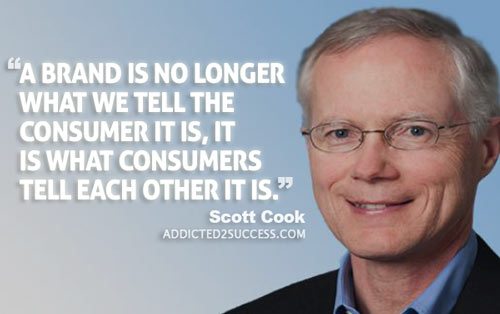Success Advice
4 Creative Ways To Own The Art Of Captivation

Facts and figures are important in business, but in today’s world people are also looking for that wow experience, that means you have to share your information in a way that excites others instead of in a way that bores them.
People are mesmerized by brands that possess emblematic qualities. The amount of success you will achieve in business is determined by your ability to connect with people in a unique way. If you learn how to captivate your audience it will increase your company’s visibility, increases the sales of your services and products, as well as generate feedback that leads to referrals and repeat business.

To own the art of captivation, you must do these 4 things below:
1. Be a good spin master
You want to be a good Spin Master. Having an ability to spin a story in a way that captivates your audience will make people feel connected to you. If you can keep a captive audience you will elicit an emotional response that motivates people to act with their hearts, minds, and even their wallets.
2. Solve a problem
Be able to eliminate any problematic situations that your future clients might be experiencing. When you focus your attention on delivering the best products or services possible, solving problems will be a byproduct of your actions. You save the day and become the hero! You solved their problems. You saved them time and refuted their thought to look elsewhere.
3. Explain how it works
People like simplicity. Explain how things work so they will be equipped to avoid obstacles. Your ability to simplify complex concepts in an intelligible manner will win over potential clients every time.
“If you can’t explain it simply you don’t know it well enough.” – Albert Einstein
4. Inspire them
People are inspired by actions. Make sure your actions are congruent with those of integrity. Your behavior, your character, and your reputation will inspire people, to invest in you and your business.
A great example of spinning a story, solving a problem, explaining how it works, and inspiring people are the new State Farm commercials. They suggestively tell you in a humorous way that they are going to be there for you. Down to their jingle, ”Like a good neighbor State Farm is there.” They draw you in.
Letting your customers know that no matter what, you will go above and beyond to take care of them is exactly what you want your customers to know about you.
Thank you for reading my article! Please leave your thoughts in the comment section below!
Did You Know
How Skilled Migrants Are Building Successful Careers After Moving Countries
Behind every successful skilled migrant career is a mix of resilience, strategy, and navigating systems built for locals.

Moving to a new country for work is exciting, but it can also be unnerving. Skilled migrants leave behind familiar systems, networks, and support to pursue better job opportunities and a better future for their families. (more…)
Life
10 Research-Backed Steps to Create Real Change This New Year
This New Year could finally be the one where you break old patterns and create real, lasting change.

Every New Year, we make plans and set goals, but often repeat old patterns. (more…)
Change Your Mindset
The Silent Skill That Makes People Respect You Instantly
What truly earns respect and why most people go about it the wrong way

Everybody craves respect but not everyone earns it. Some people believe that a title, years of experience, or a position of authority automatically entitles them to respect. (more…)
Entrepreneurs
The Essential Skills Every Entrepreneur Needs In 2026
Success in the digital age isn’t about luck. It’s about mastering the skills that separate dreamers from doers.

When I was 22 years old, I started my first side hustle as a ghostwriter. (more…)
-

 Shift Your Mindset4 weeks ago
Shift Your Mindset4 weeks ago11 E’s That Define Every Great Leader And Why Most People Miss Them
-

 Did You Know4 weeks ago
Did You Know4 weeks agoThe Success Patterns You Inherited (And Didn’t Notice)
-

 Entrepreneurs3 weeks ago
Entrepreneurs3 weeks agoThe Essential Skills Every Entrepreneur Needs In 2026
-

 Business4 weeks ago
Business4 weeks agoThe Hidden Money Pit in Your Operations (and How to Use It)
-

 Change Your Mindset2 weeks ago
Change Your Mindset2 weeks agoHow to Turn Your Mind Into Your Greatest Asset (Instead of Your Enemy)
-

 Change Your Mindset2 weeks ago
Change Your Mindset2 weeks agoThe Silent Skill That Makes People Respect You Instantly
-

 Life2 weeks ago
Life2 weeks ago10 Research-Backed Steps to Create Real Change This New Year
-

 Tech1 week ago
Tech1 week agoWhat’s in a Name? How to Get Your Domain Right
























8 Comments